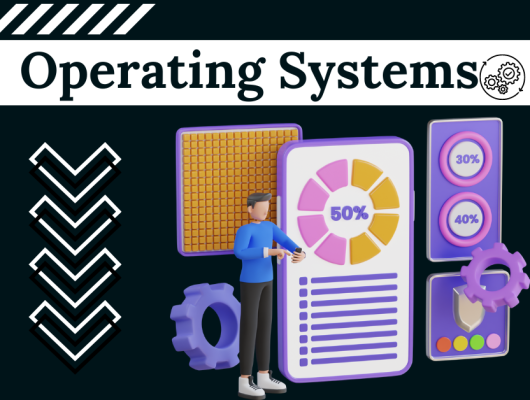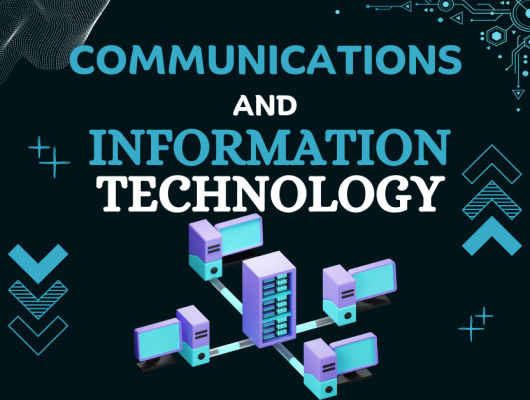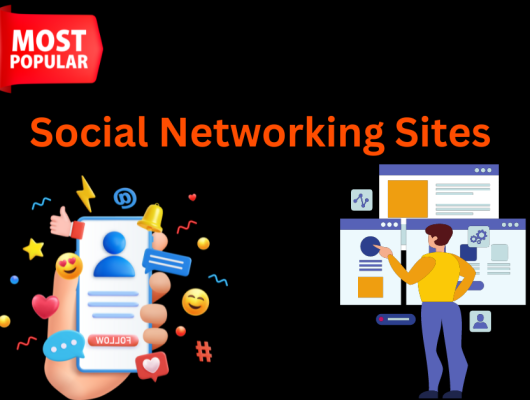Artificial intelligence, content creation, workflows, cost savings, quality, empathy, search rankings, faster, attractive option, fear, promise, hot seat, label, AI generated content, disclose, users, Gary Illyes, Search Analyst, Google, response, long-term stance, issue, marketers, search engine optimization, SEO, pros, Tokyo SEO conference, necessary, disclosing, helpful, users, Google’s long-term stance, produce, quality guidelines, E-E-A-T (Experience, Expertise, Authoritativeness, Trustworthiness), good news, discuss, care, ranking, news.
What Does It Mean to Have Content Generated by Artificial Intelligence?
AI, artificial intelligence, machines, human intelligence, tasks, language understanding, image recognition, learning, statistics, decisions, potential, people, society, industries, healthcare, education, security, Google, organization, mission, world’s information, universally accessible, useful, applications, subsidiary, DeepMind, progress, computer science, technology creation, value, daily life, users worldwide, research, product development.
Why Doesn’t Google Search Ban AI Content?
Google, LaMDA, AI innovation, Language Model for Dialogue Applications, large language model, natural responses, logical responses, reasonable responses, conversational inquiry, web information, sources, critics, social concerns, ethical concerns, legal concerns, harmful content generation, fake news, hate speech, worries, human intelligence, creativity, autonomy, validity, reliability, models, accurately reflect, human values, reality, Biased AI content, inaccurate AI content, offensive AI content, third-generation Generative Pre-trained Transformer, GPT-3, neural network model, text generation, web searches, cultural context, biases, inconsistencies, responses, engineer at Google, AI technology, conscious, Google exploiting, AI agents, profit, Challenges, risks, Google treat, AI-generated content, penalize AI content, low quality content, safe, trustworthy, beneficial, users, society.
What Is AI Content and How Is It Created?
Google, AI, content, digital, generated, enhanced, artificial intelligence, text, images, video, audio, interactive elements, diverse purposes, education, marketing, entertainment, journalism, machine learning, natural language processing, techniques, tools, digital content, interactive elements, diverse purposes, education, marketing, entertainment, journalism.
1. Content generation
Google, machine learning algorithms, artificial intelligence, content generation, original content, inputs, instructions, advanced, facilitate, create, based on, provided, input, versatility, showcased, various, written, generation, content, inputting, appropriate, keywords, topics, prompts, protocols, management, platform, quality standards, user expectations, continuous monitoring, evaluation, refinement, established.
2. Content optimization
Google, AI, improve, quality, performance, existing content, fine-tune, rewrite, edit, proofread, paraphrase, translate, engaging, relevant, accurate, SEO-friendly.
AI, improve, quality, performance, existing content, fine-tune, rewrite, edit, proofread, paraphrase, translate, engaging, relevant, accurate, SEO-friendly.
3. Content personalization
Google, AI, content, modify, preferences, needs, specific audiences, individuals, customize, user data, behavior, location, interests, goals
4. Content analysis
Google, AI, content, deal, semantics, NLP, words, source, insights, information, example, analyze, sentiment, tone, readability, keywords, topics, trends, AI-generated content, advantages, content creators, consumers, time savings, cost savings, productivity, creativity, user experience, satisfaction, benefits
Expert Tips To Win The Algorithm

1. Only Create People-First Content
Crafting digital communication requires a focus on content that deeply resonates with your audience. A people-first content approach transcends mere strategy, embodying a mindset that centers around the needs and interests of your audience. Understanding their preferences and concerns allows you to create an experience that is both engaging and meaningful.
When shaping your message, prioritize the human element and contemplate how your content will impact the lives of those who consume it. The essence of successful communication lies in your ability to create content that directly speaks to the hearts and minds of your audience. By placing people at the forefront of your content strategy, you cultivate connections that are authentic and enduring.
2. Always Rely on Human Expertise
Always Rely on Human Expertise when navigating complex decisions in fields like medicine and law. In critical situations, human expertise ensures nuanced judgment and a personalized approach. While technology aids, the human touch remains irreplaceable for its empathy and adaptability.
In the era of AI and automation, the adage Always Rely on Human Expertise underscores the unique qualities humans bring to the table. Despite technological advancements, the intricacies of creativity, emotional intelligence, and ethical considerations are best addressed by the finesse of human expertise. Integrating these strengths with technology leads to a harmonious balance in problem-solving and decision-making processes.
3. Watch Out for the Latest SEO and Content News
Keep an eye on the dynamic realm of digital marketing for the most recent developments in SEO and content. Remaining current with evolving SEO trends is vital for sustaining online visibility and relevance. Adapting to refined algorithms and optimizing content is essential for content creators in this ever-changing landscape.
Stay alert in the dynamic world of digital marketing to the latest SEO and content news. Whether it’s algorithm tweaks, emerging ranking factors, or innovative content formats, staying informed is crucial for a successful online presence. Stay ready for the freshest insights that can elevate your SEO and content strategies to new heights.
4. Responsibly Use AI-Generated Content
Crucial in the digital era is the responsible use of AI-generated content, emphasizing ethical standards and authenticity. Users must verify information, ensuring accuracy, and remain mindful of potential biases ingrained in AI algorithms. A critical approach empowers individuals to leverage the benefits of AI-generated content while mitigating the risk of spreading misinformation.
The promotion of responsible use falls on educational institutions and businesses, playing a pivotal role in establishing guidelines and ethical frameworks. These measures guide users in navigating AI technology, fostering a culture of accountability. As AI continues to shape information sharing, a commitment to responsible use ensures a more reliable and trustworthy digital environment for all.
How Google Detects and Evaluates AI Content
In the ever-evolving landscape of online content, Google employs advanced techniques to detect and evaluate AI-generated material. This process is crucial for maintaining the quality and reliability of information available on its platform.
1. Crawling and Indexing:
- Google’s web crawlers systematically explore the internet, indexing a vast array of content.
- During this process, the search engine identifies pages that potentially contain AI-generated text.
2. Natural Language Processing (NLP):
- Google utilizes sophisticated NLP algorithms to analyze the linguistic patterns within the content.
- These algorithms can distinguish between human-generated and AI-generated text based on linguistic nuances.
3. Contextual Understanding:
- Google’s algorithms consider the context in which the content appears, assessing its coherence and relevance.
- This contextual understanding helps identify discrepancies that may indicate AI-generated content.
4. User Engagement Signals:
- User engagement signals, such as click-through rates and time spent on a page, play a vital role in content evaluation.
- Pages with suspicious AI-generated content may exhibit distinct patterns in user behavior, triggering further scrutiny.
5. Continuous Learning:
- Google’s systems continuously learn and adapt to emerging trends in AI content.
- This ongoing learning process allows the search engine to stay ahead in the detection and evaluation of evolving AI-generated techniques.
Advantages and disadvantages of Google detection and evaluation
Advantages of Google Detection and Evaluation of AI
Within the field of artificial intelligence (AI), Google emerges as a trailblazer in shaping the landscape of AI development through its robust detection and evaluation processes.
1. Robust Data Processing:
Ensuring precision in data processing, Google’s advanced algorithms enhance the accuracy of AI models and optimize their performance.
2. Cutting-Edge Machine Learning:
Continuous innovation characterizes Google’s integration of state-of-the-art machine learning techniques, enabling AI systems to adapt and evolve responsively.
3. Real-time Analysis:
The speed of Google’s detection mechanisms allows for real-time analysis, a crucial factor in applications where timely insights are essential.
4. Scalability and Accessibility:
Google’s infrastructure provides scalability and accessibility, making AI solutions widely available and adaptable to varying computational demands.
5. Comprehensive Evaluation Metrics:
The platform incorporates comprehensive evaluation metrics, facilitating a thorough assessment of AI models, from precision and recall to F1 scores.
6. Seamless Integration with Google Services:
The integration of AI detection within Google services enhances user experiences, demonstrating the synergy between AI capabilities and everyday applications.
Disadvantages of Google Detection and Evaluation of AI
The domain of AI assessment by Google unveils noteworthy drawbacks that demand careful scrutiny.
1. Lack of Transparency:
- Understanding the inner workings of Google’s AI is challenging due to the black-box nature of its processes.
- This opacity raises concerns about accountability and the potential for biased outcomes.
2. Ethical Concerns:
- Ethical questions arise around privacy invasion and surveillance when a tech giant like Google employs AI in detection systems.
- Thorough examination is necessary to address issues related to responsible AI use and potential misuse.
3. Bias and Fairness:
- Unintended biases in Google’s AI algorithms may result in unfair treatment of certain groups or individuals.
- Ensuring equitable outcomes requires addressing and mitigating biases in AI systems.
4. Limited Explainability:
- The complexity of Google’s AI models can hinder explainability, making it challenging for users to comprehend decision-making processes.
- Enhancing the interpretability of AI systems is essential for building trust and understanding.
5. Security Vulnerabilities:
- AI-powered detection systems may face susceptibility to adversarial attacks, compromising technology security and reliability.
- Robust security measures are imperative to safeguard against potential threats and vulnerabilities.
Google’s detection and evaluation of AI exhibit certain limitations that warrant a closer examination. In the rapidly advancing field of artificial intelligence, it becomes imperative to scrutinize the gaps in Google’s approach.
Key Limitations:
- 1. Bias in Training Data:
- Google’s AI may reflect biases present in the training data, leading to skewed outcomes.
- This limitation raises concerns about the system’s fairness and impartiality.
- 2. Complexity Handling:
- Google’s AI may struggle with handling highly complex scenarios, impacting its overall performance.
- Addressing intricate tasks poses a challenge, highlighting a need for improved algorithmic sophistication.
- 3. Adaptability Issues:
- The system may face difficulties adapting to rapidly evolving AI methodologies.
- Google’s AI may lag behind in incorporating the latest advancements, hindering its relevance.
- 4. Ambiguity Recognition:
- Challenges arise in recognizing and addressing ambiguous situations, impacting decision-making.
- Enhancements in ambiguity handling are crucial for the system’s robustness and reliability.
Leverage The Power Of AI, Human Creativity And Expertise With Digivider
Leveraging the Power of AI, Human Creativity, and Expertise with Digivider
Today’s dynamic business landscape demands innovative solutions for sustained competitiveness. Enter Digivider, a transformative force seamlessly amalgamating the unmatched capabilities of AI, human creativity, and expertise.
Unlocking AI’s Potential:
- Optimize decision-making with AI algorithms for efficient data analysis.
- Enhance productivity by automating mundane tasks, trimming operational costs.
Nurturing Human Creativity:
- Liberate human creativity by deploying AI to manage routine tasks, allowing a focus on inventive thinking.
- Cultivate collaboration, where human and AI capabilities synergize for greater outcomes.
Accessing Expertise:
- Tap into a wealth of knowledge through AI-driven insights.
- Blend the precision of AI analytics with human expertise for well-informed decision-making.
With Digivider, businesses can achieve a harmonious fusion of AI, human creativity, and expertise, propelling them towards unparalleled success in the ever-evolving market.







